How to Recover in Super Smash Bros. Ultimate: A Guide on Recovery for Every Character
A guide to proper recovery for every playable character in Super Smash Bros. Ultimate.
A guide to proper recovery for every playable character in Super Smash Bros. Ultimate.
In a Smash game where edgeguarding is the strongest it has been since Melee, it is important for Ultimate players to know the most optimal way to recover as their character. Of course, there is some overlap in the recovery strategies for each of the characters in the game. Every character has at least one midair jump at their disposal, many of them make use of Up-Bs while recovering, and almost all of them will find some scenario where it is best for them to directional air dodge to the ledge or onto the stage. Nevertheless, there is significant nuance in the ways different characters can recover.
This article will go over the recovery options that every single character has at their disposal in Smash Ultimate. Characters will be ordered based on their appearance on the character select screen in-game, and Echo Fighters will appear alongside the character on which they are based (except for Chrom, since his recovery is distinctly different from Roy’s).

Mario’s main recovery sequence makes use of his Up-B, Super Jump Punch. However, he does have a few other situational tricks which can occasionally improve his chances of making it back to the stage. Mario’s Down-B, F.L.U.D.D., will push him in the opposite direction if used in the air, allowing him to move closer to the stage as long as his back is facing towards the stage when F.L.U.D.D. is used.
While Mario’s Side-B, Cape, lacks the same utility while recovering that it possessed in Melee, it can still be used to halt his momentum in air, potentially allowing him to throw off his opponent by mixing up the timing of his Up-B or to drift closer to the stage before using his Up-B. In addition, Mario can wall jump, boosting his vertical recovery on a handful of stages like Yoshi’s Story and Kalos Pokémon League.

Donkey Kong’s only notable recovery tool is his Up-B, Spinning Kong. While it provides a great deal of horizontal distance, it provides little vertical distance. As a result, Donkey Kong is quite capable of recovering if he is above and away from the stage but will fail to recover if he falls very far below the ledge.
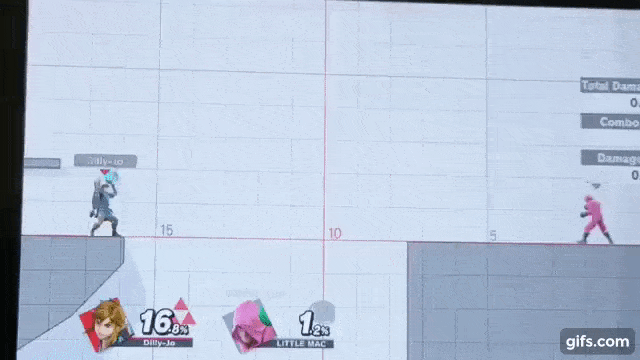
Though he can no longer perform a tether recovery, Link still has acceptable options for recovering. His Up-B, Spin Attack, provides solid vertical distance, although the horizontal distance it offers is less notable. Link is also able to perform a sort of Bomb Jump recovery using his Down-B, Remote Bomb, although it is a bit different from his Bomb Jump in previous games.
In Ultimate, Link can pull a Remote Bomb, Z-drop it so that it falls alongside him in the air, and then detonate it to launch himself towards the stage, after which he can perform an Up-B or air dodge. The effectiveness of this technique will naturally rely on Link’s proximity to the stage and his percent before Bomb Jumping, as he will be launched further by the Remote Bomb at higher percents.
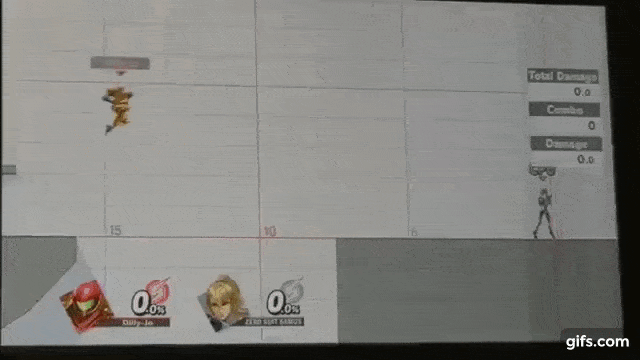
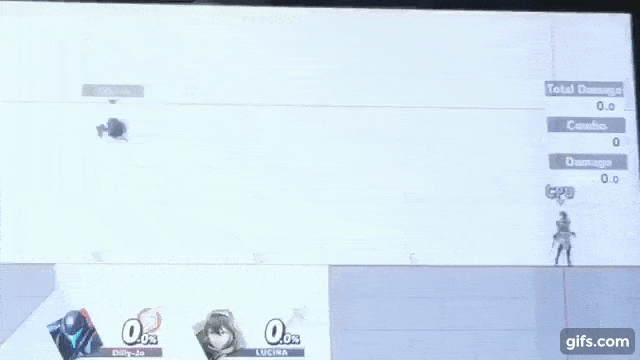
Samus and Dark Samus both have a wide variety of tools which can help them to mix up their recoveries, making them generally difficult to edgeguard. The most situational among these tools is their Neutral-B, Charge Shot, which will slightly propel them backwards if fully charged, giving it a bit of utility if Samus is facing away from the stage while offstage (although generally these characters can recover just fine without this option). They can also wall jump, and they have access to a tether which allows them to grab the ledge from far away.
Their Up-B, Screw Attack, travels straight up and covers a respectable amount of vertical distance. Finally, these two can use their Down-B, Bomb, to perform a Bomb Jump recovery. While Bomb Jumping, they can make their way towards the stage, gaining a slight jump as they come in contact with their own Bombs, and also gaining access to more precise aerial mobility while in Morph Ball form after colliding with each Bomb. This technique allows Samus and Dark Samus to cover the horizontal distance which they are unable to with their Up-B.
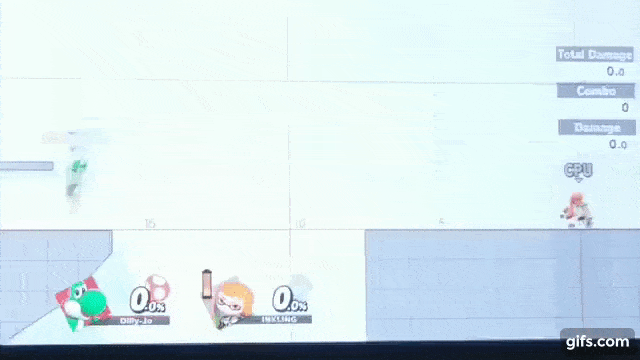
Yoshi’s primary recovery tool is his double jump. Not only does Yoshi possess one of the highest midair jumps in the game, but the super armor he gains during his double jump animation can protect him from incoming attacks and make him very difficult to gimp. Yoshi can also snap to the ledge using his Down-B, Yoshi Bomb, whether he is facing the ledge or not, giving him a quick option for getting to the ledge if he is high in the air after a double jump.
Yoshi performs a small hop when using his Up-B, Egg Throw, although the vertical distance gained is quite small compared to his massive double jump. However, Yoshi's Up-B will provide much more vertical distance if performed at the peak of his double jump. In addition, Yoshi can make good use of air dodging during his recovery. His air dodge grants him more vertical distance than his Up-B in most instances, making it more useful when recovering low, and he can interrupt his double jump with an air dodge in order to mix up his recovery sequence.
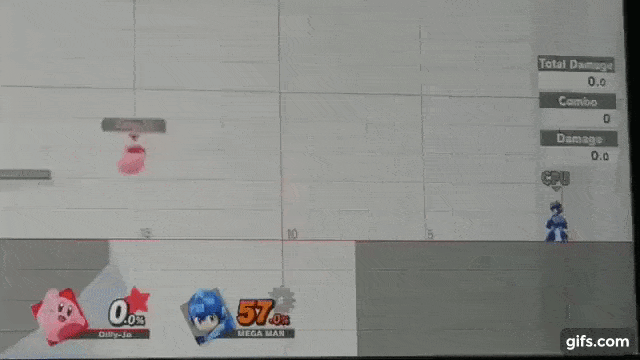
With five midair jumps at his disposal, Kirby has little trouble recovering. On top of this, his Up-B, Final Cutter, provides a decent amount of vertical distance and can snap to the ledge from above with its falling hitbox or from below with its rising hitbox. Kirby can use his Down-B, Stone, to fall quickly and change where he recovers from, although this is generally unnecessary for him to return to the stage safely. Note also that Kirby can use his Neutral-B, Inhale, to copy the Neutral-B of his opponent, which could improve his recovery depending on who his opponent is.
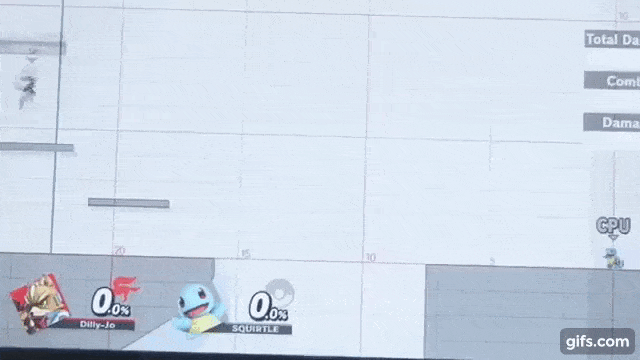
Fox possesses two solid recovery specials in his Side-B, Fox Illusion, and his Up-B, Fire Fox. Fox Illusion covers a large horizontal distance and is useful for either quickly reaching the ledge or landing somewhere on the stage. In addition, it will not leave Fox helpless, so he can use his Up-B afterwards if necessary. His Up-B covers a good amount of distance and has several different angles which Fox can use in order to reach the stage or ledge effectively.
Fox can also use his Down-B, Reflector, to perform a shine stall. By using his Reflector in the air, he will halt his aerial momentum, allowing him to position himself for a well-placed Up-B or Side-B. It is important note that he can only shine stall once, as the second midair shine will cause him to drop rapidly. While this is potentially useful as a mix-up, it could also be dangerous and result in Fox being edgeguarded. Finally, Fox is able to wall jump.

Pikachu’s Up-B, Quick Attack, is one of the best recovery moves in the game. Not only does it allow Pikachu to travel a large distance, but the fact that Pikachu can execute two different angles can make this move very difficult for opponents to predict and intercept. Pikachu’s Side-B, Skull Bash, is also helpful for moving closer to the stage before Quick Attacking, or, if it is fully charged, for traveling a very large horizontal distance.
Pikachu can wall jump, and he also has a bit of an offstage stall tactic using his Down-B, Thunder. If Pikachu is hit by his own Thunder in the air, he will stall in the air for a moment while also doing a slight jump. This can help Pikachu to alter his aerial momentum and can be helpful if used near the ledge as it creates a hitbox which can force Pikachu’s opponent away from the ledge, allowing Pikachu to recover more safely.
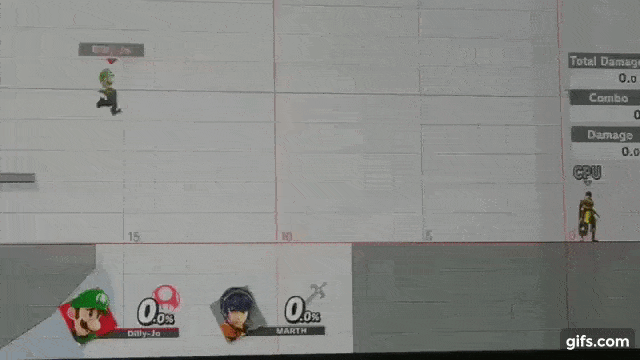
Luigi’s Up-B, Super Jump Punch, only travels vertically, as opposed to Mario’s diagonal Up-B. For this reason, Luigi must use his Side-B, Green Missile, to work his way closer to the stage before he can afford to Up-B. Like Pikachu’s Side-B, Green Missile can be charged in order to travel further. If Luigi uses his Side-B immediately after a jump, he will gain a slight vertical boost. In addition, there is a 10% chance that Luigi’s Side-B will Misfire, in which case he travels much farther, and will deal much more damage to any opponent he comes in contact with.
While Luigi's Down-B, Luigi Cyclone, no longer causes him to rise in the air, it will still cause Luigi to stall in the air if the player button mashes during the move. For this reason, the move can still be useful while recovering, though it lacks the same utility it possessed in previous games. And despite gaining a new Zair along with his new tether grab, Luigi’s Poltergust cannot actually be used as a tether recovery.

Ness possesses a very high midair jump, which is his primary recovery tool. Along with this, Ness relies on his Up-B, PK Thunder, to recover. With this move, Ness must properly direct the PK Thunder hitbox into himself in order to launch himself at the correct angle towards the stage. Because this can be difficult, especially near the ledge, Ness may find it better to air dodge to the ledge in some cases. He can also interrupt his double jump completely with an air dodge or halt his double jump’s rising momentum with a special move in order to mix up his positioning in the air.
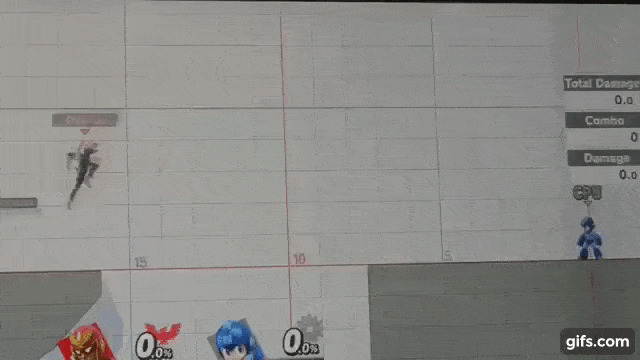
Captain Falcon primarily uses his Up-B, Falcon Dive, to recover. He can use it to recover low and snap to the ledge or to recover high and throw off his opponent by mixing up his aerial drift afterwards. Falcon can also wall jump, and his Side-B, Raptor Boost, provides some horizontal distance, although it leaves him helpless and it is less reliable as a recovery tool than his Up-B.
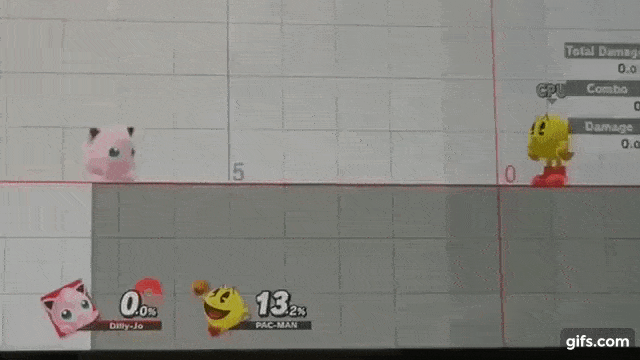
Like Kirby, Jigglypuff can jump five times in the air. And with much better air speed than Kirby, Jigglypuff is considered to have one of the best recoveries in the game. Jigglypuff’s Side-B, Pound, will allow Jigglypuff to stall for a moment in the air, and can be used to snap quickly to the ledge. In addition, she can perform a Rising Pound if she inputs her Side-B diagonally upwards. This, along with her seemingly infinite number of aerial jumps, grants Puff enough horizontal and vertical distance to recover from just about anywhere.
Jigglypuff’s Up-B, Sing, while not a standard recovery move, can be used to grab the ledge more quickly, as can an air dodge towards the ledge. Puff’s Neutral-B, Rollout, does technically provide a respectable amount of horizontal distance. However, it is quite situational, and more easily punishable than Jigglypuff’s other recovery options, so it is generally better for Puff to avoid it.
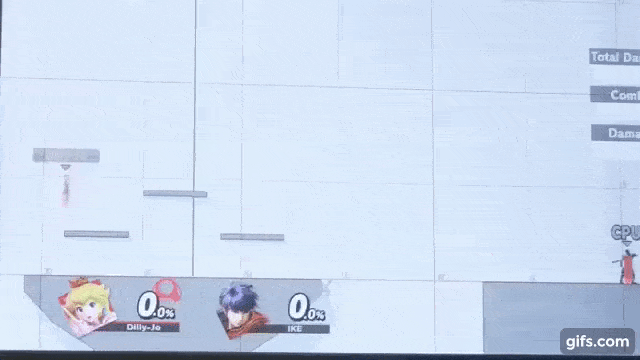
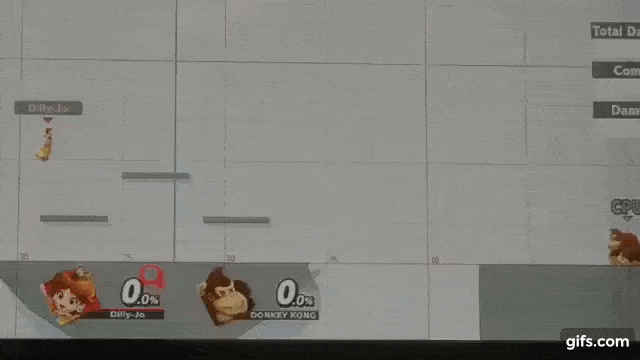
Peach and Daisy boast quite possibly the best horizontal recoveries in the game. Because they can both float, Peach and Daisy can travel to the stage from very far away, and also have a distinct ability to juke opponents in the air like no other character can. On top of this, their respective Side-Bs, Peach Bomber and Daisy Bomber, provide them with a useful horizontal leap.
These two princesses also possess a respectable vertical recovery in the form of their respective Up-Bs, Peach Parasol and Daisy Parasol. In addition to the immediate vertical jump it provides, this move is very helpful if Peach and Daisy want to mix up their recoveries while recovering high. Like during their float, Peach and Daisy can move around a good bit while gliding down after using the Parasol. They can also close the Parasol to quicken their descent and reopen it to slow their descent, giving them a plethora of options for faking out their opponents while trying to land.
Note that Peach and Daisy have occasional access to a Bomb Jump recovery. If they happen to pull a Bob-omb with their Down-B, Vegetable, its explosion can launch them towards the stage. However, this occurs infrequently, and players should typically opt not to rely on such a strategy.

Bowser’s only recovery special move is his Up-B, Whirling Fortress, which, like Donkey Kong’s, is more notable for its horizontal distance than its vertical distance. If he is high above the stage, he may find it useful to quickly fall and snap to the ledge using his Down-B, Bowser Bomb.

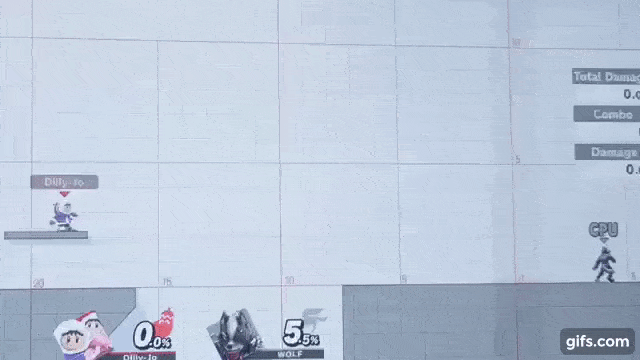
When both Climbers are present and synced, the Ice Climbers possess a very strong recovery move in their Up-B, Belay. If used below or close to the ledge, Nana will act as a tether recovery, pulling Popo up to the ledge alongside her (unless she is hit before she can pull Popo up) If used above or far away from the ledge, Popo will be launched a great distance into the air, although this comes with the risk of Nana falling to her demise if she is not close enough to drift to the ledge.
The Climbers’ Side-B, Squall Hammer, provides a good amount of vertical and horizontal distance if the player mashes during the move. Otherwise, the move will cause the Climbers to plummet downwards rather quickly. Squall Hammer cannot, however, be used to grab the ledge. In addition, the Ice Climbers’ Neutral-B, Ice Shot, will cause them to perform a slight hop, though this is fairly insignificant compared to their other recovery moves.
The hop effect from the Ice Shot is a bit more significant when Nana is gone and Popo is forced to recover on his own. In this circumstance, Squall Hammer provides a bit less height and distance, with Belay providing significantly less. As a result, Popo may rely on air dodges more frequently while attempting to recover on his own.
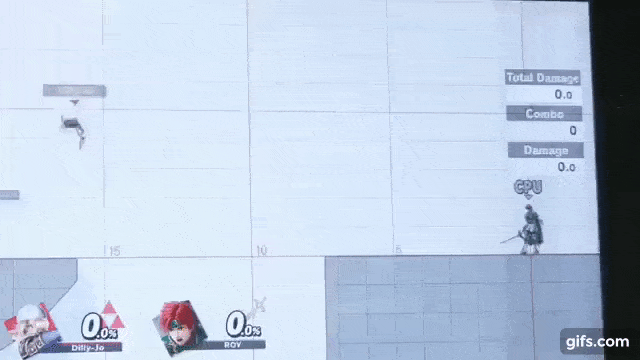
Sheik most frequently recovers using her teleport-like Up-B, Vanish. She can also get closer to the stage with her Down-B, Bouncing Fish, which will cause her to leap forward. On top of her ability to wall jump, Sheik is one of only a few characters who can wall cling. The practical uses of this are limited, but Sheik may find it useful when trying to bait a punishable edgeguard attempt from an opponent.
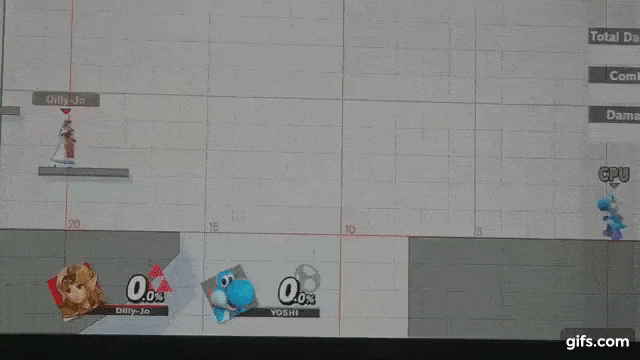
Zelda’s simplest recoveries will simply see her traveling to the stage by using her Up-B, Farore’s Wind. Since her Up-B covers a very large amount of space, Zelda rarely needs to employ other options. Nevertheless, all of her other special moves can be useful for stalling in the air if she chooses to do so.
Her Neutral-B, Nayru’s Love, temporarily halts her descent, making it safe to use to reflect any projectiles launched at Zelda. Her Side-B, Din’s Fire, does not leave her helpless as it did in previous game, so it is effective for gliding closer to the stage. Similarly, Zelda can drift towards the stage while charging her Down-B, Phantom Slash, the release of which creates a moving hitbox which can protect Zelda as she tries to reach the ledge or stage.
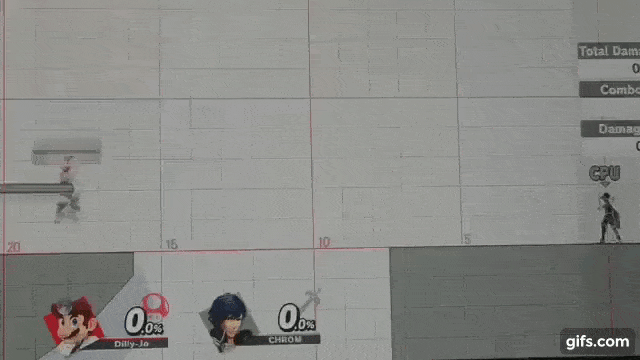
Dr. Mario can wall jump like Mario, and makes similar use of his Up-B, Super Jump Punch, although Doc’s Up-B is shorter than Mario’s. While his Side-B, Super Sheet, cannot be used to stall in the air like Mario’s, his Down-B, Dr. Tornado, grants him some vertical distance if the player mashes during the move, and can also be used to move horizontally a bit in the air.
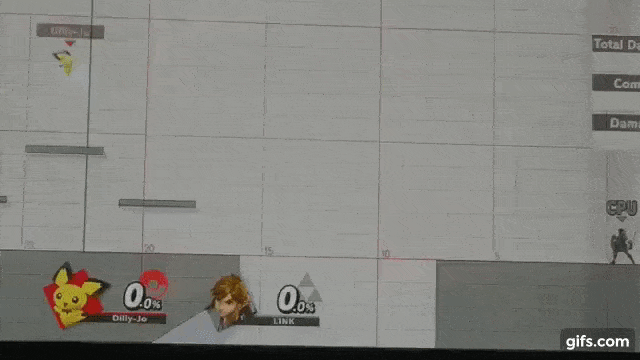
Pichu’s recovery sequence is effectively identical to Pikachu’s. Pichu has the same recovery tools as Pikachu, namely his Up-B, Agility; his Side-B, Skull Bash; his Down-B, Thunder; and his wall jump. Unfortunately for Pichu, all of the aforementioned special moves cause him to deal damage to himself, making it particularly scary anytime he finds himself offstage. Even more unfortunate is the fact that Pichu still has to rely on these self-damaging special moves, since his air dodge provides little distance and will rarely be useful.
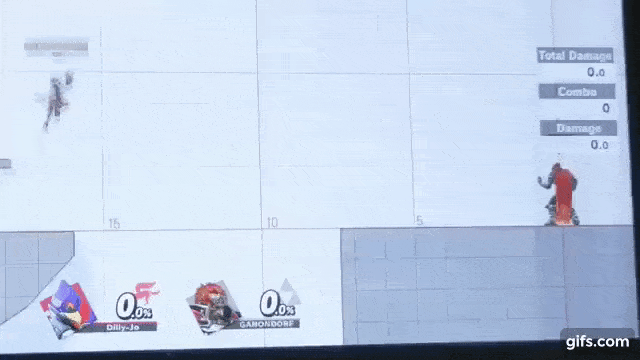
Falco has similar recovery options to Fox, although Falco’s recovery is generally considered a bit worse overall. His Up-B, Fire Bird, and his Side-B, Falco Phantasm, while definitely useful, both cover less range than Fox’s respective moves. While Falco can wall jump like Fox, he cannot shine stall, giving him a bit less freedom to mix up his recoveries than Fox. However, he can jump much higher than Fox, his one advantage over Fox in regard to recovery.
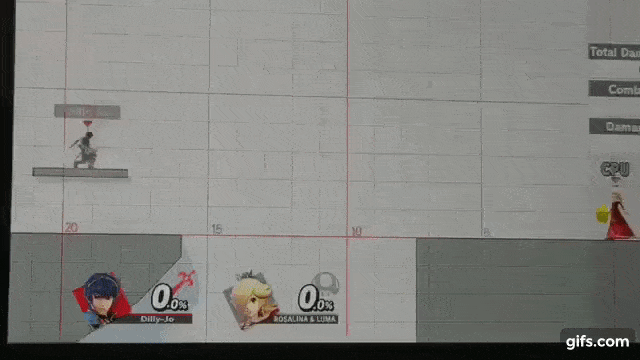
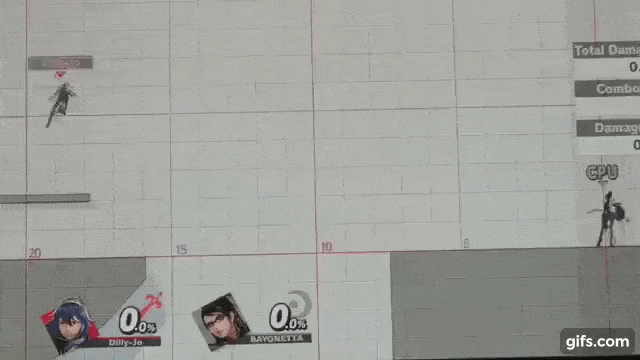
Marth and Lucina recovery predominantly by using their Up-B, Dolphin Slash. While the player doesn’t have a lot of liberty in directing this move, it can be angled slightly. Marth and Lucina can gain a slight vertical boost by using the first hit of their Side-B, Dancing Blade, but only if it is executed at the peak of a jump. These two can cover a bit of horizontal distance in the air using their Neutral-B, Shield Breaker, but it must be fully wound-up in order to provide any meaningful distance, making it difficult to incorporate practically.
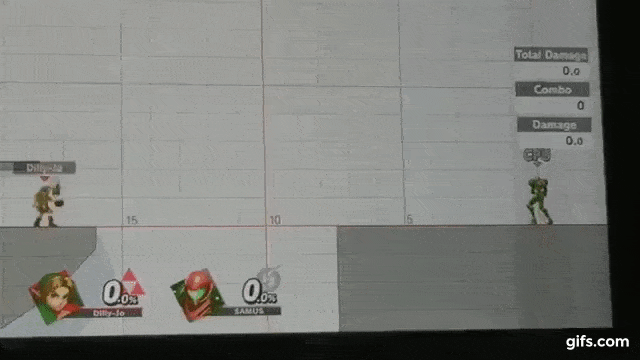
Young Link’s Up-B, Spin Attack, is similar in function to Link’s, and is useful in many of the same scenarios while recovering. Young Link gets a few more mix-up options than Link though, as Young Link can wall jump and he retains his tether recovery from Melee.
Young Link can also perform a Bomb Jump which is more familiar to those who have played any of the three Links in the past. Young Link must simply use his Down-B, Bomb, followed by an Up-B. Once the Bomb in his hand explodes, he will come out of his helpless state and be able to Up-B again.
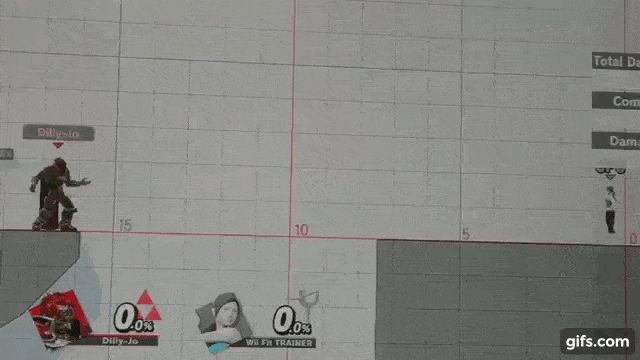
Ganondorf has two special moves which can aid in his recovery. His Up-B, Dark Dive, grants him upwards diagonal distance, while his Side-B, Flame Choke, grants him exclusively horizontal distance. Since both of these moves leave Ganondorf helpless, the two cannot be used in conjunction, and Ganondorf must choose whichever one will be most helpful given his circumstances.
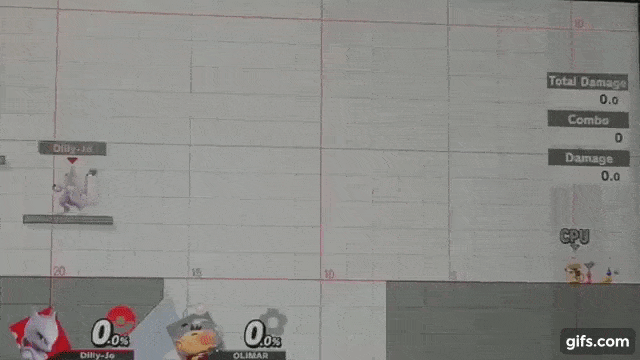
Mewtwo has a plethora of useful recovery options, foremost of which is his far-reaching Up-B, Teleport. Coupled with his extremely high double jump, Mewtwo rarely needs to use alternative recovery options. Even so, such alternatives do exist, including the ability to wall jump, and unique uses for his special moves.
Mewtwo’s Neutral-B, Shadow Ball, will launch him far in the opposite direction, making it quite useful if Mewtwo is facing away from the stage. His Side-B, Confusion, lets him perform a slight hop, and stalls his aerial momentum for a moment. As with other characters who have delayed midair jumps, Mewtwo can benefit from using an air dodge or any special move to interrupt his double jump and significantly alter his aerial positioning.
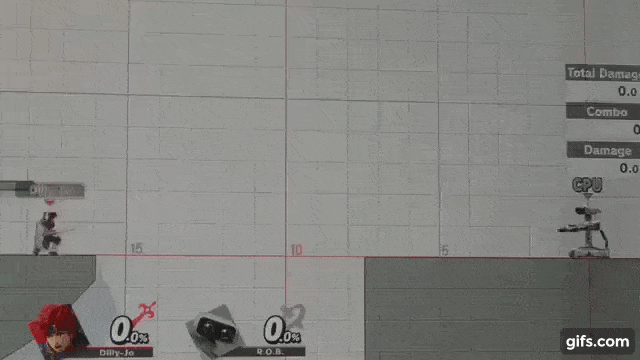
Roy’s only recovery move is his Up-B, Blazer. While the vertical distance it provides is less than that of Marth and Lucina, it can be angled more substantially than Dolphin Slash, making it more useful for horizontal recovery.
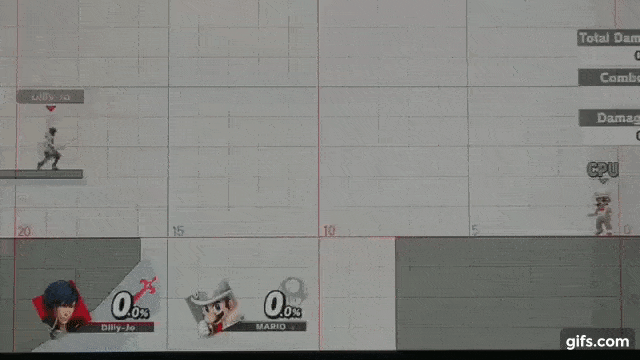
Like Roy, Chrom’s only explicit recovery move is his Up-B. However, Chrom’s Up-B, Soaring Slash is quite different from Roy’s, a unique trait considering his status as an Echo Fighter. It is functionally similar to Ike’s Up-B, so it can be used to sweetspot the ledge from either above or below, as it has rising and falling hitboxes which can grab the ledge. Since it provides a lot of vertical distance and almost no horizontal distance, Chrom may find it useful to air dodge towards the stage before using his Up-B, if he is far above the ledge of course.
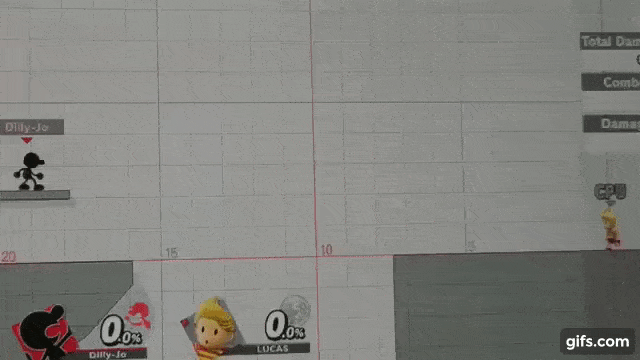
Mr. Game & Watch gains a substantial vertical boost by using his Up-B, Fire. After reaching the peak of his Up-B, Mr. Game & Watch will glide down using a parachute, granting him a similar degree of aerial mobility to Peach and Daisy after their respective Up-Bs. In addition, the parachute can be canceled by an attack at any point during Mr. Game & Watch’s descent. Notably, Game & Watch’s down-air can be used to drop down in the air quickly, after which he can Up-B, should he choose to recover low as opposed to recovering high.

Like Kirby and Jigglypuff, Meta Knight boasts five midair jumps. And while all of Meta Knight’s special moves are useful for recovering, all of them will leave him helpless, so he cannot use any of them in succession. His Neutral-B, Mach Tornado, allows him to cover a great amount of horizontal distance and a good amount of vertical distance if the player mashes.
Meta Knight’s Side-B, Drill Rush, covers predominantly horizontal distance, although the player can alter its trajectory to make it go more upwards. His Up-B, Shuttle Loop, is his best vertical recovery move. And lastly is his Down-B, Dimensional Cape, which is probably the least necessary among these recovery specials but is still usable.
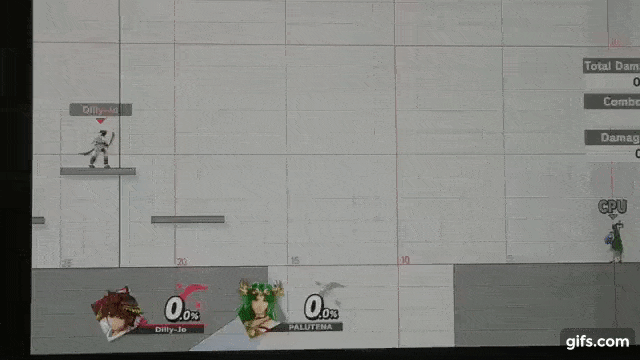
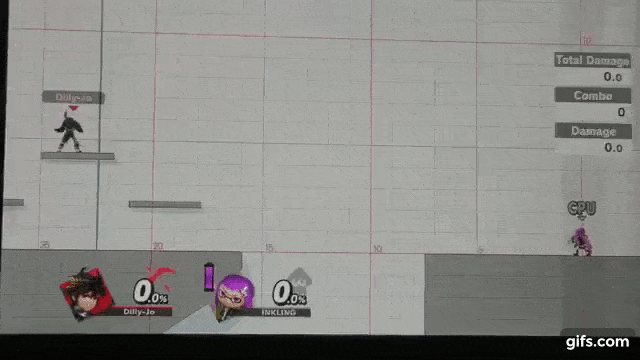
Pit and Dark Pit each have three midair jumps at their disposal. Though a bit laggy, their respective Side-Bs, Upperdash Arm and Electroshock Arm, can be used to travel some horizontal distance in the air. Besides this, the angel boys typically recovery using their Up-B, Power of Flight, which can be angled differently depending on how and where Pit or Dark Pit wants to recover.

Zero Suit Samus primarily uses her Up-B, Boost Kick, when recovering low. She can travel some horizontal distance using her Down-B, Flip Jump, which can also be used to bounce off of walls if the player inputs a jump command as Zero Suit makes contact with the wall. Her Zair can be used as a tether recovery, as can her Side-B, Plasma Whip. Zair is generally preferable since it is faster, but Zero Suit can turn around using Plasma Whip, which she can’t do with Zair, making Plasma Whip more useful after a wall jump or if Zero Suit Samus is facing away from the stage for any other reason.
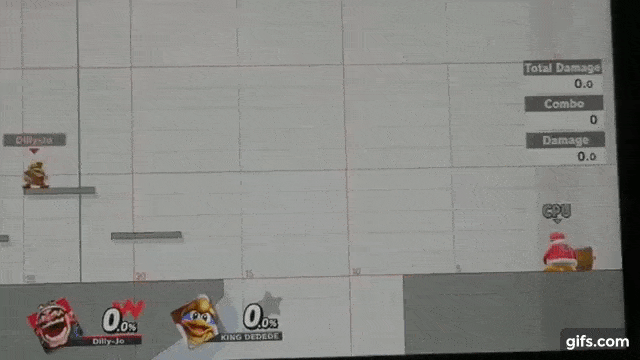
Wario can travel a decent amount of horizontal distance using his Side-B, Wario Bike. He also performs a small jump after dismounting his Bike, even if he has already used his double jump. Wario can get a solid vertical boost if he uses his Down-B, Wario Waft, while it is fully charged, but it is generally better for Wario to save the Waft as an offensive option. After these options are considered, Wario is free to travel upwards using his Up-B, Corkscrew.
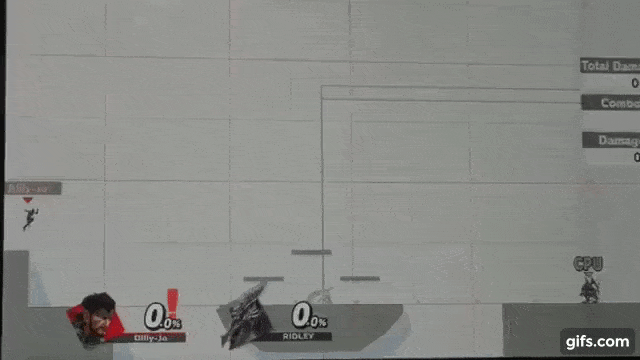
While Snake’s recovery seems simple, limited mostly to just his Up-B, Cypher, Snake has a unique sort of Bomb Jump recovery at his disposal. While he is flying with his Cypher, Snake can cancel the Cypher and drop a C4 with his Down-B. Then, he can fall alongside the C4 and detonate it by pressing Down-B again, the knockback from which will grant him access to another Cypher. Since Snake never loses the ability to Up-B again during this process, Snake can use this technique to stall offstage indefinitely (or at least until he kills himself from the C4 damage).
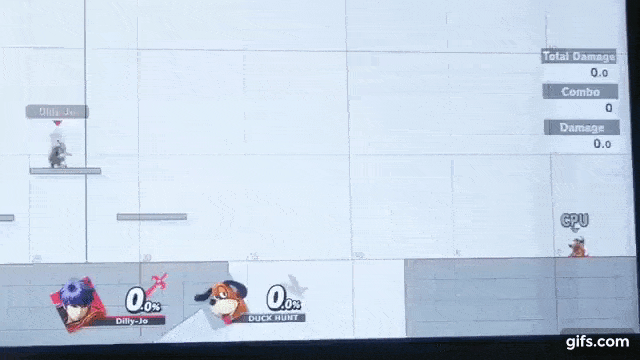
Ike can travel a great distance horizontally and vertically, although not in the same sequence. His Side-B, Quick Draw, thrusts Ike forward for a large distance. His Up-B, Aether, grants a solid vertical boost and possess rising and falling hitboxes which can be used to snap to the ledge. However, both of these moves leave Ike helpless, so the move he uses will depend on whether he is far away from the stage or far below the ledge.
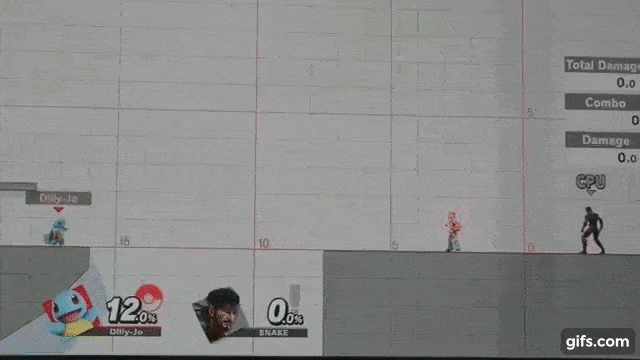
There is a lot to talk about with Pokémon Trainer’s recovery, as it is important to understand how each of the Pokémon recover individually, and how they can recover as a singular unit. We’ll start with Squirtle, who has the most options of each of the individual Pokémon.
Squirtle is the only one of the three who can wall jump, and he can wall cling as well. Squirtle thrusts himself a tiny bit backwards in the air using his Neutral-B, Water Gun. His primary recovery tool is his Up-B, Waterfall, which moves Squirtle diagonally upwards. Squirtle’s Side-B, Withdraw, can be used to travel a good bit of horizontal distance in the air. However, this can be risky, since Squirtle will fall into a helpless state if he gets footstooled while using Withdraw offstage.
Ivysaur’s only recovery special is his Up-B, Vine Whip, which acts primarily as a tether recovery. However, it is interesting to note that Ivysaur performs a slight hop when using his Up-B far away from the ledge, and he does not become helpless after using it (which is important for the strategy we will discuss later).
Charizard has two midair jumps, along with two useful recovery specials. His Side-B, Flare Blitz, covers a large horizontal distance, although it deals recoil damage and can be easily punished if Charizard hits a shielding opponent. He can gain vertical distance using his Up-B, Fly.
Ordinarily, there is a two second cooldown window between uses of Pokémon Trainer’s Down-B, Pokémon Change. However, this window can be circumvented by using a special move before executing the Down-B. Therefore, all three of the Pokémon can recover as a single unit using the following sequence: double jump as Squirtle, switch to Ivysaur, use Vine Whip, switch to Charizard (this can be done instantly because of Ivysaur’s use of a special move that did not leave him helpless), use Charizard’s third jump, and finish with one of Charizard’s recovery specials.
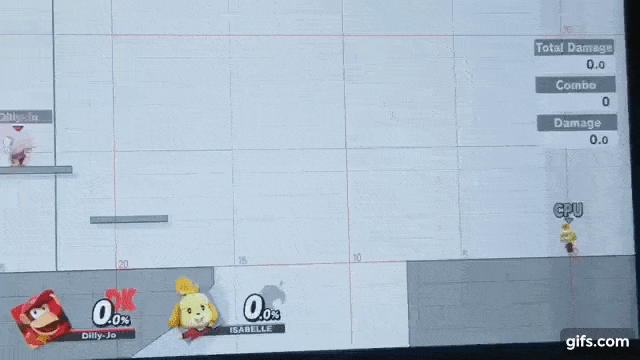
Diddy Kong’s Side-B, Monkey Flip, propels him forwards through the air. Diddy will commonly follow up this move with his Up-B, Rocketbarrel Boost. Diddy Kong’s Up-B will travel further the longer it is charged, and he can alter his trajectory while charging, although he descends slowly while he charges. Conversely, if he begins charging the move immediately after using his double jump, he will ascend a bit as he charges, a technique known as Barrel Jumping. In addition, Diddy Kong has the ability to wall cling and wall jump.
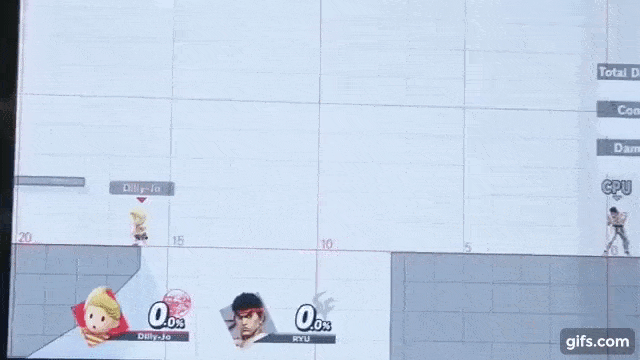
Lucas’ recovery is much like Ness’, although Lucas does have a bit more variation in the ways he can recover. Like Ness, Lucas has a delayed double jump which goes very high and can be interrupted with an air dodge or special move. In addition, his Up-B, PK Thunder, functions in the exact same manner as Ness’.
Unlike Ness, Lucas will gain a slight backward boost from using his Side-B, PK Fire, in the air. On top of this, his Rope Snake can be used as a tether recovery. Because of these two options (primarily the latter), Lucas has a bit more recovery mix-up potential than Ness, and a slightly stronger recovery overall.
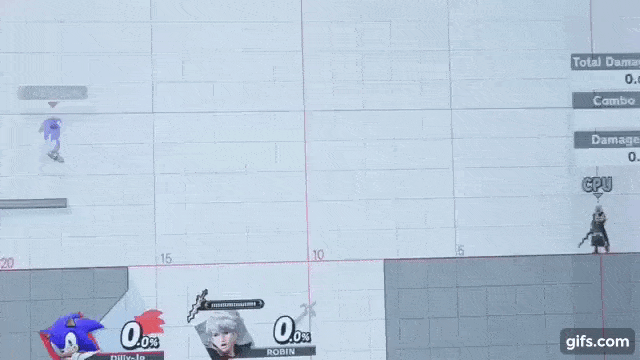
Sonic is one of only a few characters who can utilize each of his special moves while recovering. His primary recovery tool is his Up-B, Spring Jump. Not only does it provide a great deal of vertical distance, but Sonic does not become helpless after using it, giving him the option to follow it up with an air dodge or another move. Sonic’s Side-B, Spin Dash, causes him to hop a little before moving diagonally downwards and can be canceled with a jump, although Sonic must be sure not to use his second jump before using this move.
The rest of Sonic’s options are a little more situational but can still be helpful. His Down-B, Spin Charge, will instantly launch him forward at a downwards diagonal angle, making it a little more dangerous to use than Spin Dash. If Sonic is not close enough to an opponent to lock on to them with his Neutral-B, Homing Attack, then the attack will quickly launch Sonic diagonally downwards. Nevertheless, he will rise a bit while the move is charging, so it can be helpful for recovering. Finally, Sonic is capable of wall jumping.
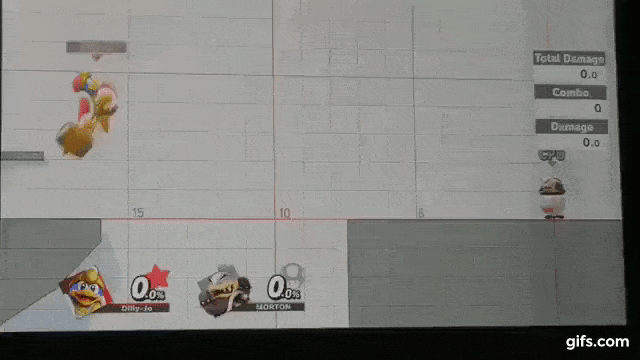
Dedede possess four midair jumps, as well as a very high-reaching Up-B, Super Dedede Jump. Dedede must be careful not to use the move’s falling hitbox while offstage, as it cannot grab the ledge. For this reason, Dedede may find it helpful to cancel the falling animation by pressing either up or B. Upon doing so, Dedede will enter his helpless state, but he will have more control over his aerial drift than if he utilized the falling hitbox.
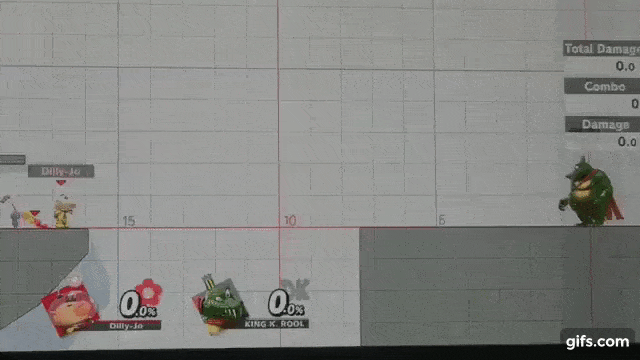
Olimar’s Up-B, Winged Pikmin, lacks a hitbox of any kind, but it can travel a decently large distance. Olimar will travel faster and further the fewer Pikmin he has, so he may find it necessary to throw his Pikmin away if he is very far below the stage. Without any Pikmin in tow, Olimar’s recovery becomes among the best in the game. However, it is important to note that this move becomes less effective with consecutive uses, so players should allow for a cooldown window between uses.
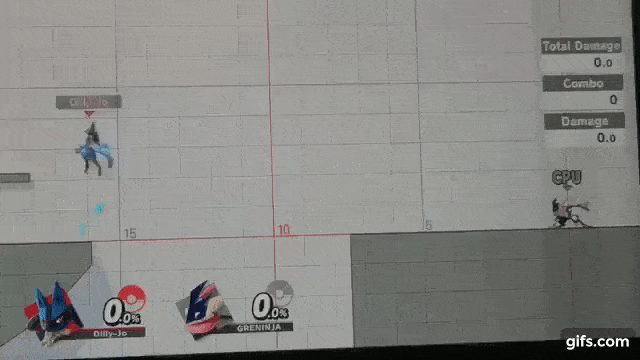
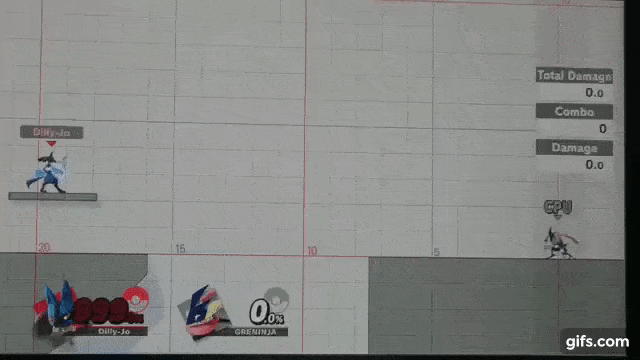
Lucario is one of the few characters with the ability to wall cling. Besides this, Lucario primarily makes use of his Up-B, Extreme Speed, to cover large amounts of space. If his opponent is throwing projectiles, Lucario may be able to counter them using his Down-B, Double Team, launching him forward a good distance. He can also make occasional use of a fully charged Neutral-B, Aura Sphere, which launches him backwards if used in the air. Unique to Lucario is the aura mechanic, because of which he gains a greatly improved recovery at high percents.
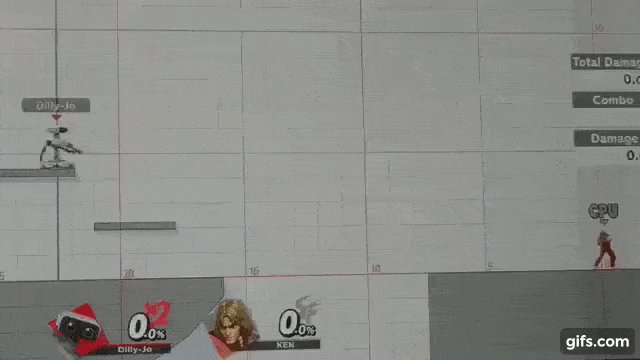
R.O.B. has access to a lot of interesting techniques which can make his recovery very tricky to predict. R.O.B.’s Side-B, Arm Rotor, will cause him to perform a slight hop in the air, after which he can move a bit forwards while attacking any incoming opponents. In addition, his back-air will propel him forwards, making it more pragmatic than similar moves that other characters possess since it requires R.O.B. to be facing the stage, a much more common position than facing away from the stage.
R.O.B.’s Up-B, Robo Burner, is incredibly useful while recovering. It travels a respectable amount of distance, and R.O.B. maintains a lot of control of his aerial mobility while using it. He can halt and continue his upward momentum (indicated by him lowering and raising his arms), and if he uses an attack midway through his Up-B, he will be able to continue with his Up-B afterwards. Eventually he will run out of fuel and his Up-B will end, but even after this point he is not helpless, and he can utilize an air dodge if necessary.
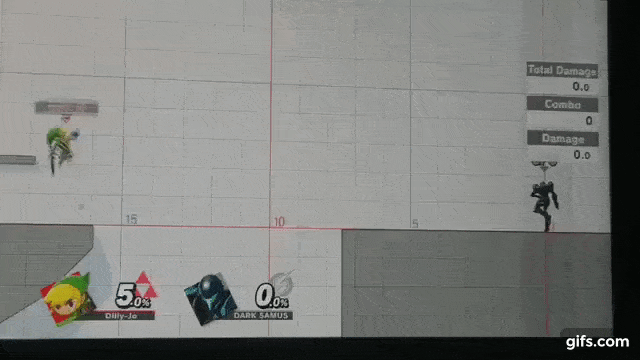
Perhaps unsurprisingly, Toon Link has the same recovery tools as Young Link. As a result, he will perform the same kinds of recovery sequences, relying on his Up-B, Spin Attack; his wall jump; and his Bomb Jump. While Toon Link and Young Link’s recoveries won’t play out in exactly the same way (Toon Link is notably quicker in the air than Young Link), the methods of recovering at least translate well between them.
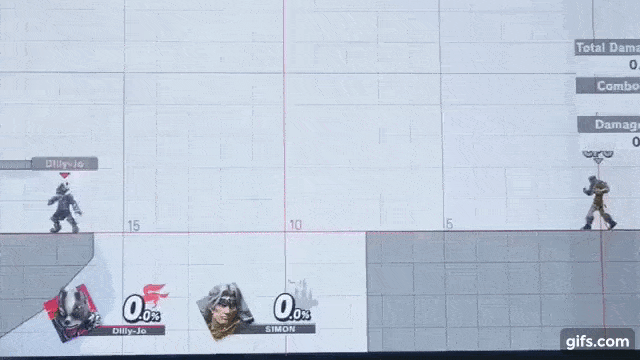
Like Falco and unlike Fox, Wolf’s Down-B, Reflector, cannot be used to stall in the air. Therefore, he relies on his wall jump and his two recovery specials while recovering. His Side-B, Wolf Flash, is the more commonly used of these two as it faster, it travels a greater distance, and its horizontal angle generally makes it sufficient for recovering. However, his Up-B, Fire Wolf, can be angled precisely in ways that his Side-B can’t, giving Fire Wolf some specific utility.
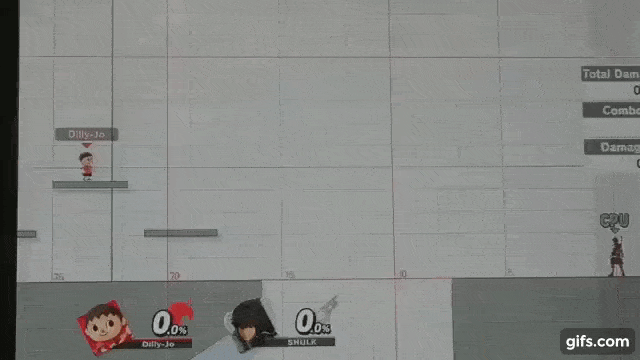
By holding the B button while using his Side-B, Lloid Rocket, Villager will climb atop the Lloid Rocket and can use it to cover a large horizontal distance. Villager can also wall jump, although it is his Up-B, Balloon Trip, which grants him what is quite possibly the best recovery in the game. In addition to covering a huge amount of vertical space, Villager has very good control of his aerial mobility while using his Up-B. With this move, he can recover from almost anywhere that isn’t past the blast zones. However, his Up-B will be less effective on its second use in a row, so Villager needs to leave a cooldown window between uses much like Olimar.
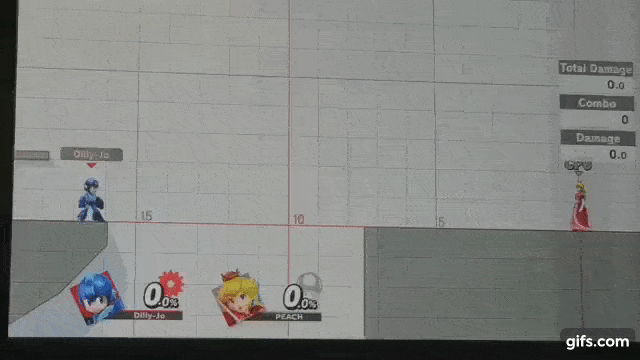
Besides wall jumping, Mega Man recovers exclusively by using his Up-B, Rush Coil. The move provides a great deal of vertical distance, and Mega Man is not left helpless, giving him the option to attack, air dodge, or even use his midair jump out of the move. He will also gain access to another Up-B if he falls back onto Rush and bounces up again, although this is not really relevant when recovering from offstage.
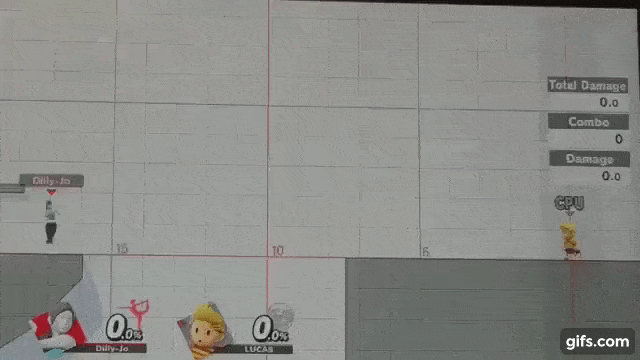
Wii Fit Trainer can travel a decent amount of vertical distance and has some control over her trajectory when using her Up-B, Super Hoop. She will perform a slight hop and stall in the air for a bit when using her Side-B, Header. In addition, by pressing B a second time, the Header attack can be canceled, allowing Wii Fit Trainer to fall towards the stage without hitting the ball towards her opponent, a mix-up which can help her to reach the ledge more quickly. On top of these options, Wii Fit Trainer can also wall jump.
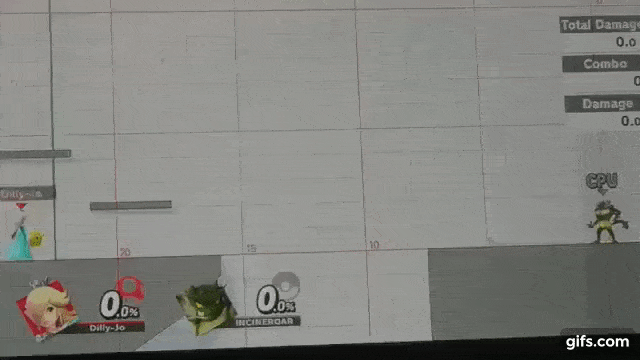
While Rosalina’s recovery is very good, it is also quite simplistic. Her only recovery move is her Up-B, Launch Star. The move travels a large distance, and it can be angled, giving Rosalina at least a tiny bit of agency in determining how she will recover.

Though Little Mac's recovery has been considerably buffed from Smash 4, it is still quite weak compared to most characters in Ultimate. The biggest improvement is the fact that his Side-B, Jolt Haymaker, will no longer leave him helpless when used offstage. However, Jolt Haymaker can still only be used once per recovery sequence, and he will need to return to the stage in order to gain access to the move again.
Little Mac’s Up-B, Rising Uppercut, provides next to no horizontal distance, and relatively unimpressive vertical distance when used in the air. As a result, Mac may find it helpful to wall jump and/or air dodge to the ledge if he is close enough to the stage. Even with these additional options, however, Little Mac still struggles to make it back if he has been launched a considerable distance from the stage.

Greninja’s best recovery move is his Up-B, Hydro Pump. It is similar to Pichu’s Agility in that it lacks a hitbox but can be angled twice, making it tricky for opponents to figure out exactly where Greninja will land. He can gain some horizontal distance before executing his Up-B by using his Side-B, Shadow Sneak. This move allows Greninja to travel farther the more he charges it. Greninja may also get a horizontal boost if he is able to counter an opponent's projectile with his Down-B, Substitute. In addition, Greninja can wall cling, and he boasts one of the highest jump heights in the game.
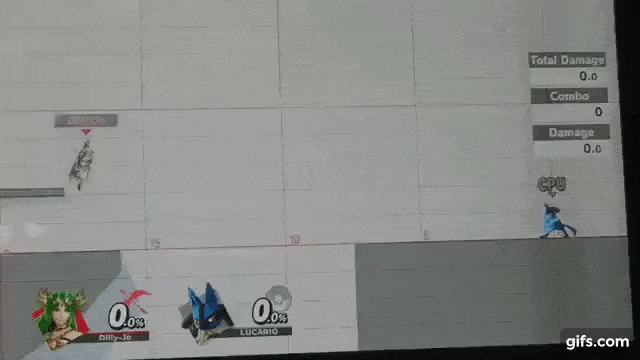
Palutena’s only explicitly useful recovery move is her Up-B, Warp. Her only agency while recovering is deciding where she will Warp to, as her Up-B does provide a plethora of recovery angles. While she lacks mix-up options beyond this, her recovery is still considered decent by nature of teleport-like recoveries being quite good.
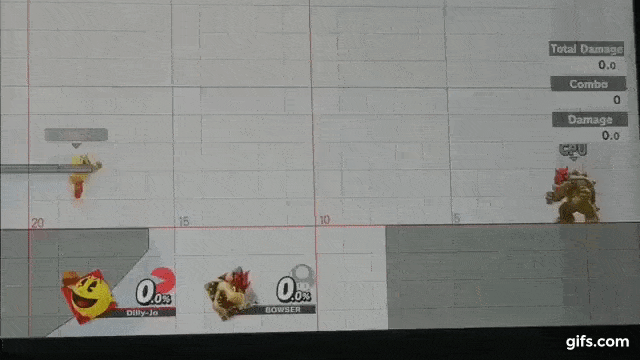
PAC-MAN has several options to help him when recovering from offstage. His Neutral-B, Bonus Fruit, can be used to stall for a bit in the air, while also having the obvious benefit of helping PAC-MAN cycle to his more useful Fruit. His Side-B, Power Pellet, grants PAC-MAN a good amount of horizontal distance. In addition, PAC-MAN can alter the trajectory of the move during its charging phase, allowing it to act as an almost strictly vertical recovery move if PAC-MAN so chooses.
His Up-B, Pac-Jump, rockets him into the air off of a trampoline. If he does not gain enough vertical distance the first time, he can fall back onto the trampoline two more times, gaining additional height with each subsequent bounce. However, PAC-MAN must be careful not to drift past the trampoline and fall to his demise, nor can he afford to let his opponent jump on the trampoline to make it disappear. PAC-MAN is also able to wall jump.
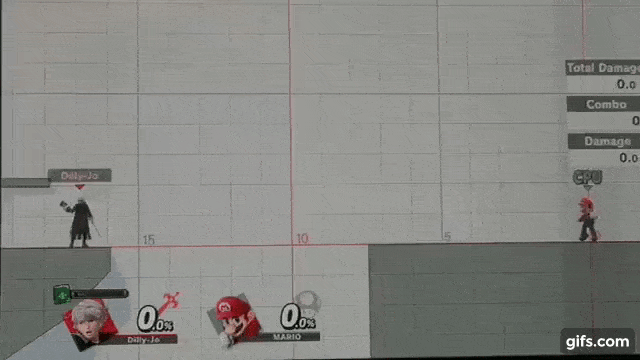
Robin recovers predominantly through the use of his Up-B, Elwind. The move provides a great amount of vertical distance, and he can angle each of the two Elwind boosts a bit differently (although not to the same extent as characters like Pikachu or Greninja).
If Robin runs out of the Elwind tome, he will only perform a slight hop when trying to use his Up-B. However, the “unsuccessful” Elwind will not leave him helpless, so he can use his midair jump or air dodge afterwards. He can also use it to stall briefly offstage if his Elwind tome is close to recharging, as he will be able to Up-B again once the tome is fully charged.
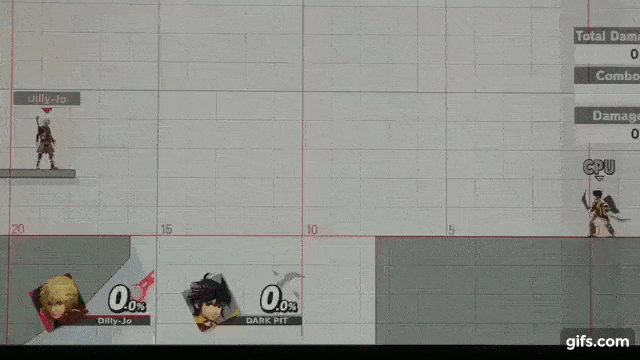
Shulk recovers using his Up-B, Air Slash. While the move is fairly straightforward, he does get a second slash which can carry him a bit higher by pressing the B button a second time. If he waits too long to press the button again, he will just fall helpless, but there is a small window of leniency wherein Shulk can actually mix up the timing of the second slash.
Critical to Shulk’s ability to recover is his Neutral-B, Monado Arts. By switching to the Jump Art, he will gain access to higher jumps, quicker air speed, and a higher Air Slash. Shulk can switch to the Jump Art while offstage and still have time to recover successfully in many cases. If he is above the ledge, he can also make use of his Side-B, Back Slash, in order to fall towards and snap to the ledge.
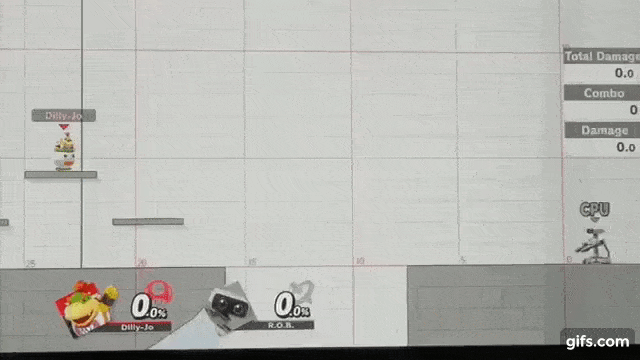
Bowser Jr. can travel a significant horizontal distance using his Side-B, Clown Kart Dash. He can perform a jump to cancel this attack, even if he has already used his double jump. In order to cover vertical distance, he must use his Up-B, Abandon Ship! It is a decent recovery move, but Bowser Jr. is vulnerable to being gimped afterwards, so it is best to Abandon Ship! straight to the ledge. While he is outside of the Junior Clown Car, Bowser Jr. can perform an attack with a hammer, and he can neutral air dodge (he cannot, however, directional air dodge).

Duck Hunt’s Up-B, Duck Jump, functions similarly to those of Olimar and Villager. Duck Hunt has a great deal of control over his trajectory while flying with this move. The move can also be canceled with an aerial attack at any time, although Duck Hunt will become helpless afterwards. Duck Hunt is also able to wall jump, supplementing his already strong recovery.

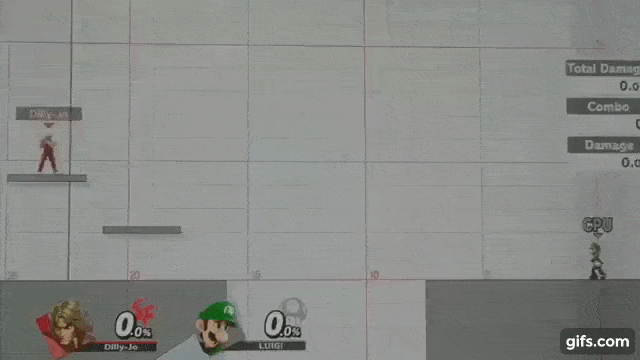
Ryu and Ken have an array of synergetic tools which help them to recover. Their Down-B, Focus Attack, can be canceled into a dash by double tapping in either direction while still holding the B button. This allows them to stall briefly in the air, after which they get a slight horizontal boost. They will also stall slightly in the air when using their Neutral-B, Hadoken.
The primary horizontal recovery tool Ryu and Ken have at their disposal is their Side-B, Tatsumaki Senpukyaku. In terms of vertical recovery, they rely on their Up-B, Shoryuken. Note that both Tatsumaki Senpukyaku and Shoryuken will travel a greater distance if the B button is held rather than tapped.

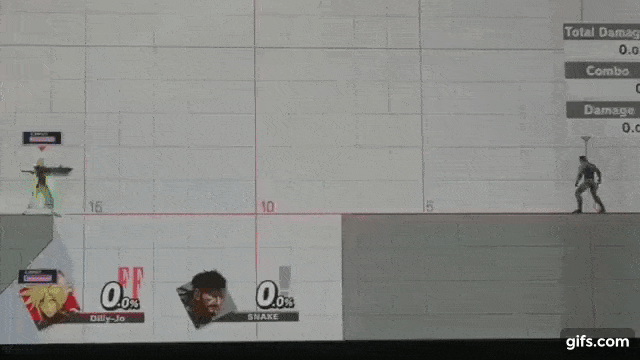
Cloud’s only recovery move is his Up-B, Climhazzard. In addition to its rising hitbox, the move has an optional falling hitbox which can be used to fall to the ledge (of course, using this offstage is suicide). Because his recovery options are limited, Cloud benefits from the ability to wall jump, and may find it useful to air dodge in order to provide some horizontal recovery. Once his Limit Gauge is fully charged, Cloud’s Up-B becomes a much more effective recovery tool, although Cloud generally does not want to be forced to waste his Limit on a recovery when it could be used as a kill option instead.
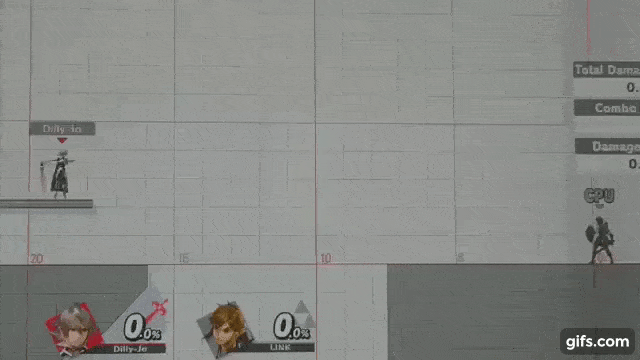
Corrin is one of the few characters who frequently uses a non-special move while recovering; Corrin’s back-air will propel him in the opposite direction, making it frequently useful like R.O.B.’s back-air. Besides this, Corrin commonly relies on his Up-B, Draconic Ascent, which has a few different angles which Corrin can utilize to most effectively return to the stage. He can also perform a faux wall cling into wall jump with his Side-B, Dragon Lunge, and he can still for a bit in the air while charging the bite portion of his Neutral-B, Dragon Fang Shot.
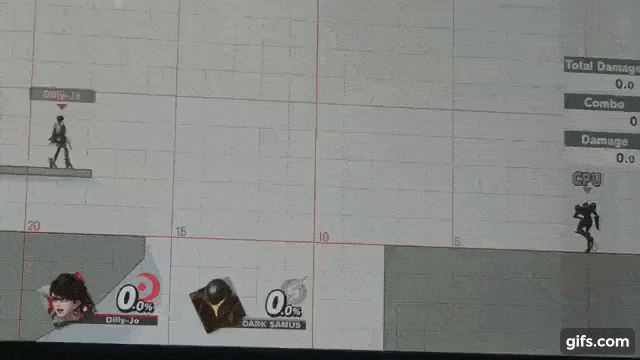
Bayonetta has very solid recovery options, predominantly because of the unique properties of her Up-B, Witch Twist. Bayonetta is the only character who can Up-B twice in a row without becoming helpless. After using her first Witch Twist, she merely needs to use her double jump in order to gain access to a second Witch Twist. In addition, if she uses her Up-B within three frames of starting her double jump, she will retain her double jump and can use it after her second Up-B, a technique known as the triple jump.
Bayonetta’s aerial Side-B, After Burner Kick, launches her diagonally upwards and is a solid horizontal recovery move. While she can only use it once in a typical recovery sequence, she will gain access to another if she hits or is hit by an opponent. Additionally, if she collides with a wall using her After Burner Kick, she will perform a hop before falling back down, after which she can wall cling into a wall jump or air dodge to the stage. This gives the move a bit of utility even if Bayonetta is below the ledge and close to the stage.
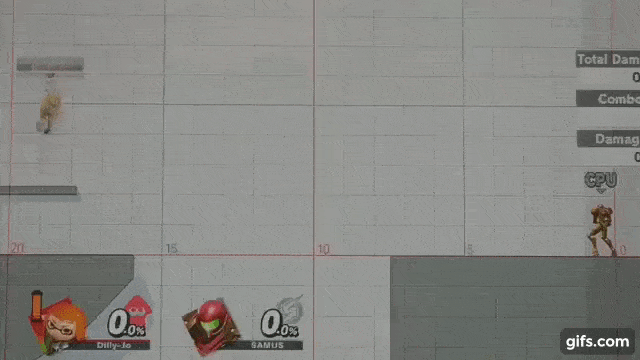
Inkling can travel a great deal of horizontal distance in the air with her Side-B, Splat Roller, assuming she has ink in her tank. If her ink tank is empty, the Splat Roller will not allow her to travel any distance. Inkling can jump out of the Splat Roller, and she will also perform a slight hop if she collides into a wall with the Splat Roller. This works well in conjunction with the fact that Inkling can wall jump.
Inkling’s Up-B, Super Jump, provides a great deal of vertical distance, and Inkling can change its angle before she launches upwards. It has a landing hitbox which can make it tricky for opponents to punish. In addition, it is unaffected by the amount of ink in Inkling’s tank, meaning Inkling does not have to worry about failing to recover if she has run out of ink.
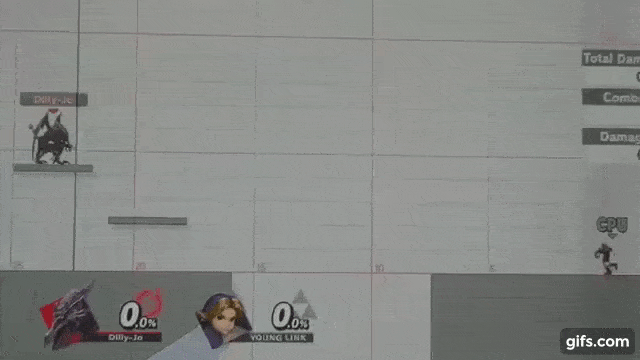
Ridley’s recovery sequence is vaguely reminiscent of Charizard’s in that he has two midair jumps and two recovery specials he can utilize. His Side-B, Space Pirate Rush, allows Ridley to rush forwards and cover a decent amount of horizontal space. For vertical recoveries, Ridley must use his Up-B, Wing Blitz. Despite appearing similar to such moves as Fire Fox, Ridley’s Up-B only has four unique angles (for each direction Ridley is facing), giving Ridley much less wiggle room when deciding how to best recover. Notably, Ridley's forward facing Up-B will travel at a slight downwards angle, whereas his backwards facing Up-B will travel slightly upwards.

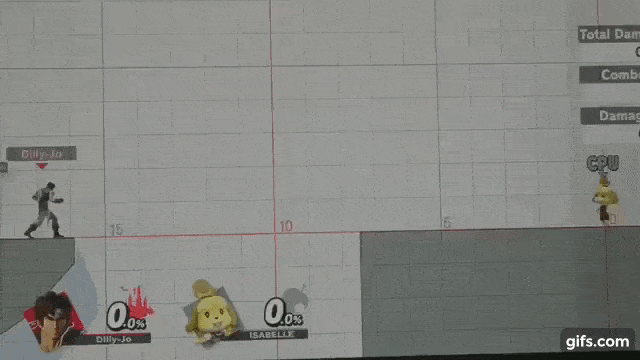
Simon and Richter can cover a decent amount of vertical space using their Up-B, Uppercut. However, when recovering they will generally rely on their forward-air, back-air, and up-air, all of which can act as tether recoveries and latch onto the ledge. These tether moves account for the horizontal distance which their Up-B cannot provide.
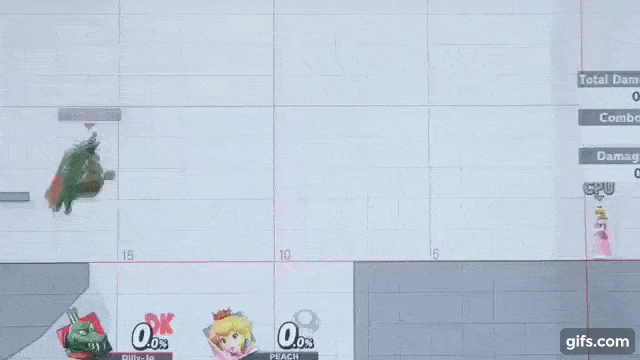
King K. Rool’s primary recovery tool (and the only one he generally needs to rely on) is his Up-B, Propellerpack. The move travels a fairly large distance quickly, giving King K. Rool one of the best recoveries among heavyweights. Another more situational tool to consider is K. Rool’s up-air, which causes him to perform a slight hop. While the move has a lot of endlag in the air, King K. Rool can use it to hop over the ledge and land on the stage.
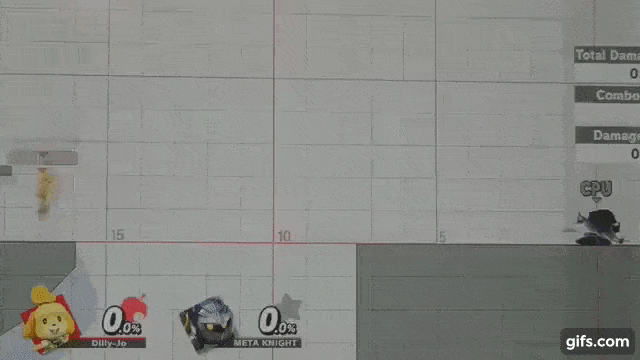
Isabelle’s Up-B, Balloon Trip, is functionally similar to Villager’s, acting as an overall strong recovery which becomes weaker after its first use. Her recovery differs from Villager primarily through her Side-B, Fishing Rod. Fishing Rod acts as a tether grab, giving Isabelle an option for mixing up her recoveries.
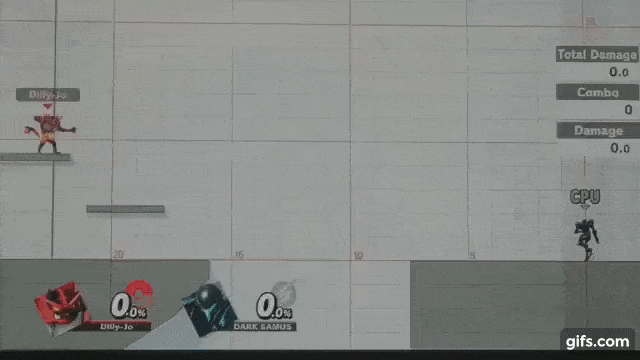
While not particularly strong, Incineroar’s recovery is at least a little better than it might initially seem. His Side-B, Alolan Whip, grants him some horizontal distance, after which he can perform a midair jump or an air dodge. If he chooses to air dodge, he will probably end up recovering low with his Up-B, Cross Chop, which provides a respectable amount of vertical distance when used to snap to the ledge. If he does not reach the ledge with the rising hitbox of Cross Chop, he will instead fall at a diagonal angle, which requires very precise positioning if it is to grab the ledge.

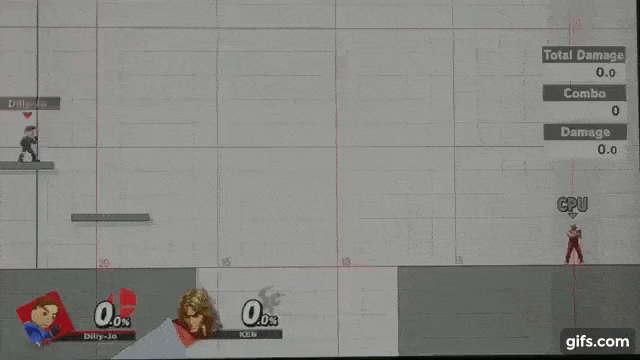
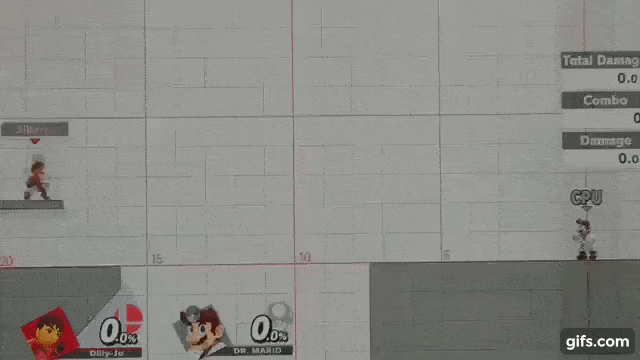
Things get a little complicated with the Miis, as their special moves can be mixed-and-matched to create custom movesets. For the purpose of this article, we will address all three special sets for each of the three Mii Fighters individually, without considering crossovers between special sets. In the case of Mii Brawlers, all of them can wall jump regardless of their special set.
In the first set, Mii Brawler’s Up-B, Soaring Axe Kick, is similar to Cloud’s Climhazzard in that it features a rising hitbox and an optional falling hitbox, both of which can be used to grab the ledge. His Side-B, Onslaught, provides a bit of horizontal distance, but will leave him helpless afterwards. His Down-B, Head-On Assault, can be used to fall quickly and snap to the ledge (this will be suicide, though, if the Mii Brawler fails to reach the ledge).
In the second set, Mii Brawler’s Up-B, Helicopter Kick, provides an acceptable amount of horizontal distance, with less impressive vertical distance. His Side-B, Burning Dropkick, provides a great deal of horizontal distance, as does his Down-B, Feint Jump. While less significant, his Neutral-B, Flashing Mach Punch, does stall him for a bit in the air, allowing it to be functionally similar to a shine stall.
In the third set, Mii Brawler’s Up-B, Thrust Uppercut, provides a helpful amount of vertical distance, and can be angled to provide better horizontal distance. His Side-B, Suplex, covers some horizontal distance, much like Incineroar’s Alolan Whip, although Suplex will leave Mii Brawler helpless. And his Neutral-B, Exploding Side Kick, can be used to gain a horizontal boost, but it has to be fully wound-up in the air, much like Marth’s Shield Breaker.
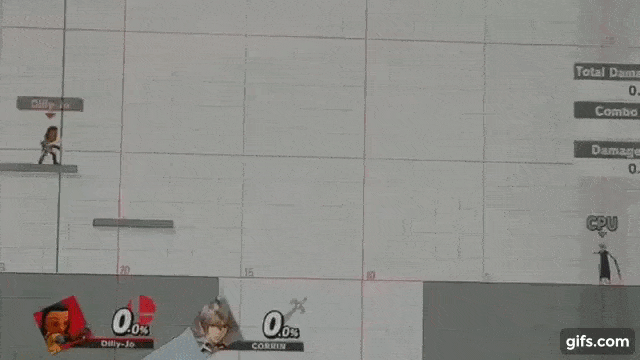

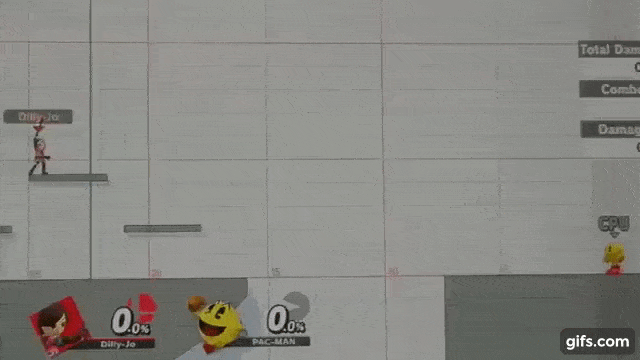
In the first set, Mii Swordfighter is able to travel a large horizontal distance using his Side-B, Airborne Assault. Interestingly, the Mii Swordfighter will eventually become helpless after using this move, but there is a small window beforehand wherein he can execute another attack. During this time, he can use his Up-B, Stone Scabbard, an Aether-like rise-and-fall move.
In the second set, Mii Swordfighter’s Up-B, Skyward Slash Dash, covers a good amount of distance and can be aimed in a plethora of different angles. He can also stall slightly in the air with his Down-B, Reversal Slash, and can travel forwards horizontally with his Side-B, Gale Stab.
In the third set, Mii Swordfighter has less options for recovering. He can launch himself diagonally downwards using his Down-B, Power Thrust. Afterwards he must quickly use his Up-B, Hero’s Spin, if he is to return safely to the stage.
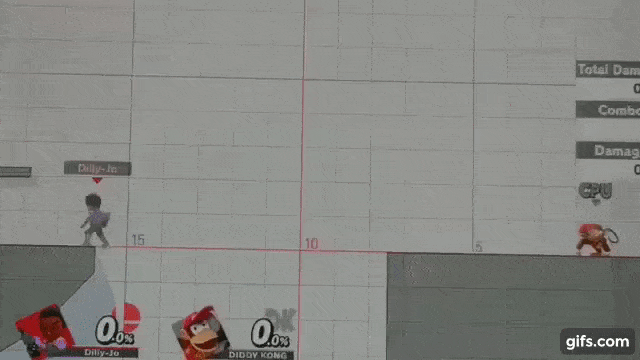
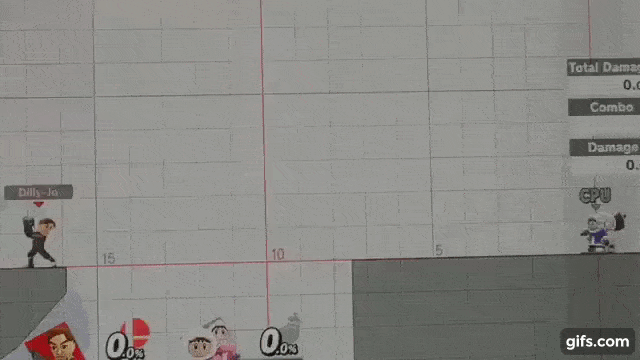
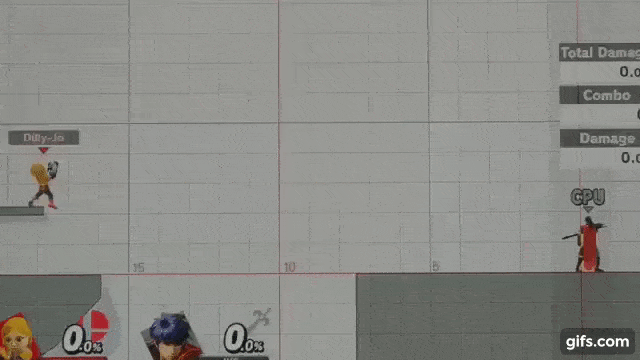
Mii Gunner has a few more universal recovery options compared to the other Mii Fighters. Every Mii Gunner has the ability to wall jump. In addition, all of them possess a forward-air which will launch them backwards if no direction is held, strengthening their recovery if they are facing away from the stage.
In the first set, Mii Gunner gets a tremendous vertical boost from her Up-B, Lunar Launch. Her Neutral-B, Charge Blast, is almost identical to Samus’, and can thus be used to launch her backwards a little bit. In addition, her Down-B, Echo Reflector, can be used to perform what is effectively a shine stall.
In the second set, Mii Gunner’s Up-B, Cannon Jump Kick, functions similarly to Lunar Launch but with less distance. In addition, Mii Gunner can slowly move through the air for a brief moment while charging her Side-B, Stealth Burst.
In the third set, Mii Gunner’s primary recovery tool is her Up-B, Arm Rocket. The move travels a solid distance, and Mii Gunner has a good amount of control over the angle of the attack. Besides this, she can very briefly stall with her Down-B, Absorbing Vortex, if she uses it before she has reached the peak of her jump.
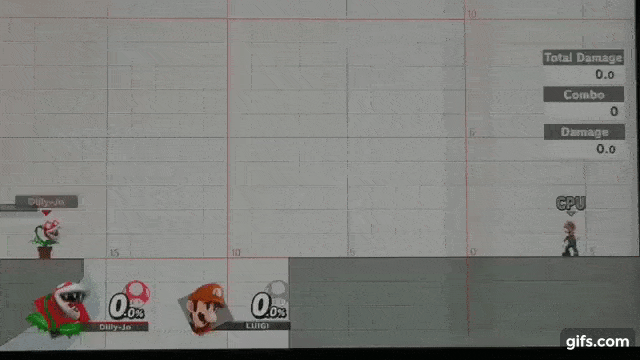
When recovering, Piranha Plant primarily relies on his Up-B, Piranhacopter, which travels quite a respectable distance. Beyond this, his only other option his to slow down his falling speed in the air using either his Neutral-B, Ptooie, or his Down-B, Long-Stem Strike. However, he can not drift horizontally during either of these moves. And despite its appearance, Long-Stem Strike cannot be used as a tether recovery.
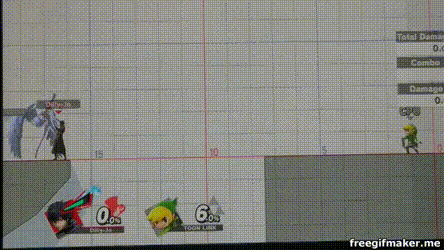

Joker has a plethora of options that can help him to make it back to the stage. If the players presses the control stick to the side while holding Joker’s Neutral-B, Gun, Joker will do a dash forward in the air, similar to an air dodge. However, this dodge does not have nearly as much lag as an air dodge, and can be used multiple times, giving it significant utility in allowing Joker to recover.
Besides this, Joker will primarily recover by using his Up-B, Grappling Hook. Grappling Hook functions like many other tether recoveries, allowing Joker to latch onto and pull himself up to the ledge. This move covers a significant amount of range compared to other tether recoveries. In addition, using this move well above the ledge causes Joker to perform a slight hop, after which he can use the move again. Although Joker can Up-B as many times as he wants in the air, only the first one will give him an additional vertical boost.
When Arsene, Joker’s Persona, activates, his recovery changes. His Up-B becomes Wing of Rebellion, which travels a significant vertical distance and which grants Joker a good deal of intangibility. Joker also has the ability to wall jump (regardless of whether or not Arsene is present).